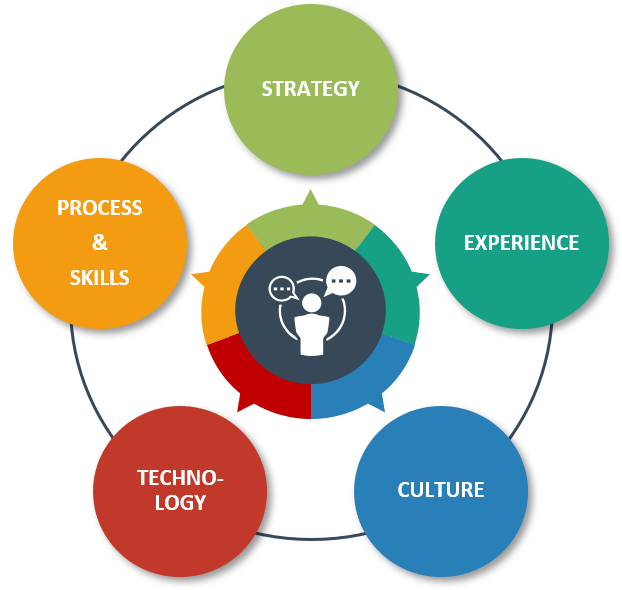An area of increasing attention across the past decade, digital transformation, has gained unstoppable momentum once the coronavirus pandemic came and made every organization rethink how it operates. Technological advances of recent years have enabled businesses to answer the changing demands of the growingly tech-savvy market. Some of the more forward-thinking businesses have jumped at the opportunity to harness technology to transform their operations, but many others have suddenly found themselves with outdated, bloated, and inefficient business models.
Today, there is hardly any doubt that some dimension of digital transformation is not only recommendable but even necessary for the survival and the success of both established and emerging businesses. Technology is changing the market at an accelerated pace, requiring everyone to adapt and future-proof their operations.

What do we mean when we say “digital transformation”?
“Digital transformation” is a broad umbrella term that involves using modern technology to improve different aspects of organizational operations, either by optimizing existing processes or introducing new ones.
Digital transformation can include the following areas:
- Business processes – optimizing costs, efficiency, quality, and improving the customer experience
- Business model – replacing or updating traditional business models with a new model rooted in modern technology
- Products and services – redefining the product and the services the organization provides in order to broaden the market and approach a more tech-savvy audience
- Organizational culture – updating the organizational mindset and people management in line with the digital world.
Digital transformation is always a comprehensive effort meant to address every area that can be improved and made more efficient through the reliance on digital technology. Due to its complexity, it is strongly advisable to consult digital transformation professionals prior to entering the process.
Importance of internal communications in digital transformation
The course of the transformation is greatly determined by the product and the services an organization provides, as well as its specific industry. One area that’s universal for all organizations and plays a crucial role in the process of digital transformation is internal communications. Regardless of the specific actions an organization chooses to make itself future-proof, internal communications serve to ensure that everyone is aligned about the process and engaged in its course. Properly communicating relevant aspects of the process with the employees will ensure transparency and build trust, without which the transformation will unavoidably meet resistance.
Proper internal communication through the course of digital transformation does not have to be complex. It is more about not skipping any steps and ensuring that everyone is on the same page. Over the following lines, we will highlight several key focus areas of internal communications organizations should address to gain internal support for the process of digital transformation.
Be transparent
Organizational change is always met with a certain amount of resistance, but it can be minimized through honest and transparent communication. The only way the employees will buy into the process is if they understand its importance. Openly communicate the goals and benefits of transformation, explain how everyone is expected to support the process, be available to clear any uncertainties, and be quick to address any emerging difficulties. Without internal support, it will be very difficult to make the transformation successful.
Cover all the bases (multi-channel communication)
All organizations have specific means of communicating, and it is important to address the employees wherever they go to for information. Whether it’s an email, a team chat, an internal website, a newsletter, a bulletin board, or an in-person meeting, make sure that everyone has all the relevant information and an opportunity to speak their mind. Communication is a two-way process and it is important to not just distribute information top-down, particularly if we wish to gain support for future plans.
Provide a comprehensive communication platform
In the contemporary workplace, communication and collaboration take place in a variety of scenarios with a growing trend towards the digital realm. Organizations are responsible for providing tools that help employees communicate and collaborate better. In order to enable smooth and seamless communication that meets the growing demands of modern teams, organizations must install the right tools for the trade like StartingPoint and Pumble. A robust and comprehensive team chat app like Pumble that enables both real-time and asynchronous communication, direct and indirect communication, as well as file sharing and many other team collaboration needs is a great starting point for any team, regardless of the specific industry.
Make information available
Digital transformation is all about efficiency. An important part of digital transformation is the internal distribution of information. Each organization generates a body of information relevant to all its members – policies, procedural information, news updates, standards of conduct, knowledge base, resource library, etc. All this information needs to be easily accessible to all employees at all times. Consider gathering all this information in a dedicated depository (such as an internal website) where it is structured in an intuitive and easy-to-use manner.
Communicate the culture
Changes on an organizational level always present an opportunity to reaffirm collective values. Digital transformation can be made more effective by tying it to the organization’s mission, vision, and values. It is the right time to reassess the existing values, to test their relevance in the changing context, and potentially redefine them in line with the change of course. Digital transformation changes the identity of a company, and it is important to rethink what that identity is and make adjustments that will resonate with both the course of the process and the people who will carry it through.
Digital transformation can take many shapes and forms, from smaller adjustments to comprehensive makeovers. Whatever its shape may be, the success of any digital transformation is greatly dependent on the internal support of team members. Quality internal communication provides a pathway towards gaining that crucial support.
Author bio:
Nikola Radojcin is no stranger to digital transformation. He works at Clockify where he helped his colleagues switch to a full-time remote workplace.
